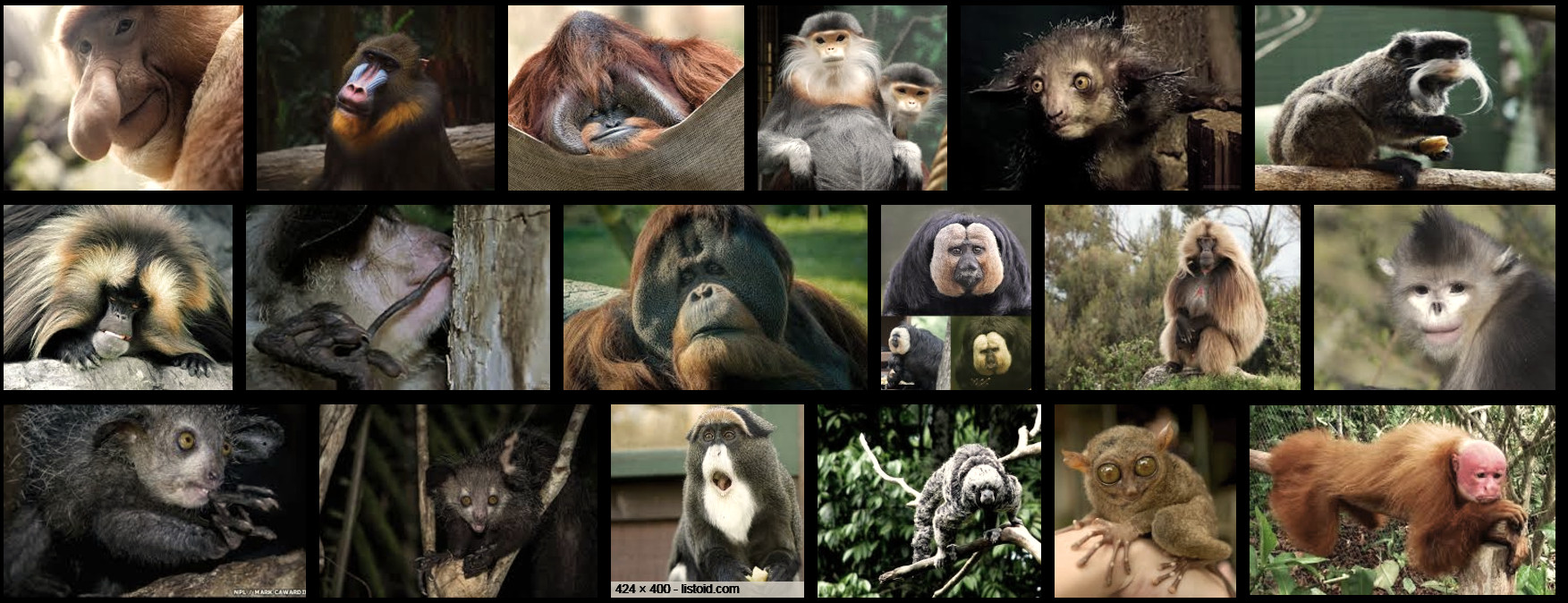There are many things going into the evolution of our face. It is not as simple as discussing a single trait. Your question is therefore quite broad. So I will just pick up three different traits and talk a little bit about them. Those traits are
- hairs
- size of the jaw
- cranial capacity
As I will only say a few words, you will have to look for more advanced information by yourself if you want to deepen your knowledge.
But first, let me make a few other comments
A few comments
Panselectionist view of evolution
When you say what advantage did nature selected our present face?, you seem to assume that any evolutionary had to be brought about via a selective pressures. Yet, there is so much more to evolution than just natural selection. Not every trait has been selected for (otherwise we would not have any genetic disease). There is for example genetic drift who is also a very important evolutionary force.
On this subject, you might want to have a look at the paragraph Did you say Natural Selection? of this answer to Why don't mammals have more than 4 limbs? and to Why do some bad traits evolve, and good ones don't?
Accuracy of your Australopithecus's face
In the reconstruction of the appearance of a extinct lineage, there is always some part of artistic representation to fill the gap of what we don't know. One should investigate the exact method used to recreate this image before assuming that Australopithecus looked exactly like that.
For more information have a look at In reconstructions, how are various shapes of facial features determined from skull only?
On top of that, please note that there is variation in faces within a species. This is true for Homo sapiens today and it was true for other great ape lineage. More importantly, there were at least 6 species of Australopithecus (see wiki > Australopithecus).
Human species or hominini lineage?
Your question is
Why did the face of human species changed so much during the course of its evolution?
When we say "human species", we typically refer to H. sapiens (or even H. sapiens sapiens). Based on your images, you seem to rather ask about the evolution of faces in the hominini lineage and not only in H. sapiens as Australopithecus is not the same species as us. Australopithecus is actually a genus (other than Homo) containing several species.
Evolution of a few facial traits
Hairs
We've lost plenty of hairs! Have a look at the post Why did humans lose their fur? to understand why.
Size of the jaw
Here is a timeline of evolution of hominini

As you can see, Australopithecus did not know how to cook. They did not know how to control fire. The first to have a good control of fire were probably Homo erectus.
By cooking, we pre-digest our food, leaving much less work for our digestive system, including the physical mastication performed by our jaws and teeth. As a consequence our jaws reduced in size (Wrangham and Conklin-Brittain 2003, Lucas et al. 2006; See also this book from Lucas).
Size of the brain
H. sapiens cranium is about 3 times the size of Australipithecus cranium (Leigh 1992 and Smith et al. 1995).
Cooking allowed us to save much energy, which could then be used for higher cognitive abilities. Without cooking, it is likely that our brain would never has gotten to the size it has today. Our brain consumes about 20% of our energy today (which is very unusual if you compare to other species). Cooking therefore also lead to an increase in brain size.
 (reconstruction of the face of Australopithecus)
(reconstruction of the face of Australopithecus)


